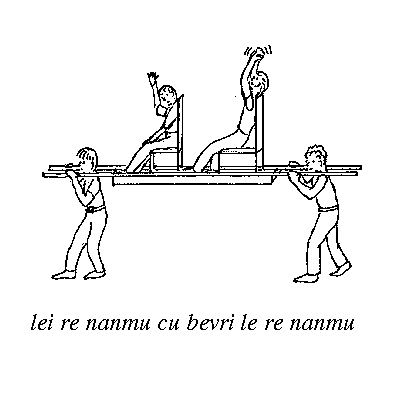If you understand anything about Lojban, you know what a sumti is by now, right? An argument, one of those things that fills the places of simple Lojban sentences like:
In Example 6.1 , mi and le zarci are the sumti. It is easy to see that these two sumti are not of the same kind: mi is a pro-sumti (the Lojban analogue of a pronoun) referring to the speaker, whereas le zarci is a description which refers to something described as being a market.
There are five kinds of simple sumti provided by Lojban:
Here are a few examples of each kind of sumti:
| e'osai | ko | sarji | la | .lojban. |
| [request] [!] | You [imperative] | support | that-named | Lojban. |
|
Please support Lojban! |
Example 6.2 exhibits ko , a pro-sumti; and la .lojban. , a name.
| mi | cusku | lu | e'osai | li'u | le | tcidu |
| I | express | [quote] | [request] [!] | [unquote] | to-the | reader. |
|
I express “Please!” to the reader. |
Example 6.3 exhibits mi , a pro-sumti; lu e'osai li'u , a quotation; and le tcidu , a description.
Example 6.4 exhibits ti , a pro-sumti; and li ci , a number.
Most of this chapter is about descriptions, as they have the most complicated syntax and usage. Some attention is also given to names, which are closely interwoven with descriptions. Pro-sumti, numbers, and quotations are described in more detail in Chapter 7 , Chapter 18 , and Chapter 19 respectively, so this chapter only gives summaries of their forms and uses. See Section 6.13 through Section 6.15 for these summaries.
